Physical Address
Located in Pasadena, a few miles from Los Angeles, Kaiser Permanente Medical School has a strong focus on patient care, taking advantage of six clinical locations in Southern California. You may have heard of Kaiser Permanente, which has had residency programs since 1946, and offers health insurance and healthcare facilities, primarily in the western U.S.
How to Get Into Kaiser Permanente Medical School: Requirements and Strategies
How hard is it to get into Kaiser Medical School? Learn requirements, acceptance rate, and strategies for getting into California’s newest free medical school
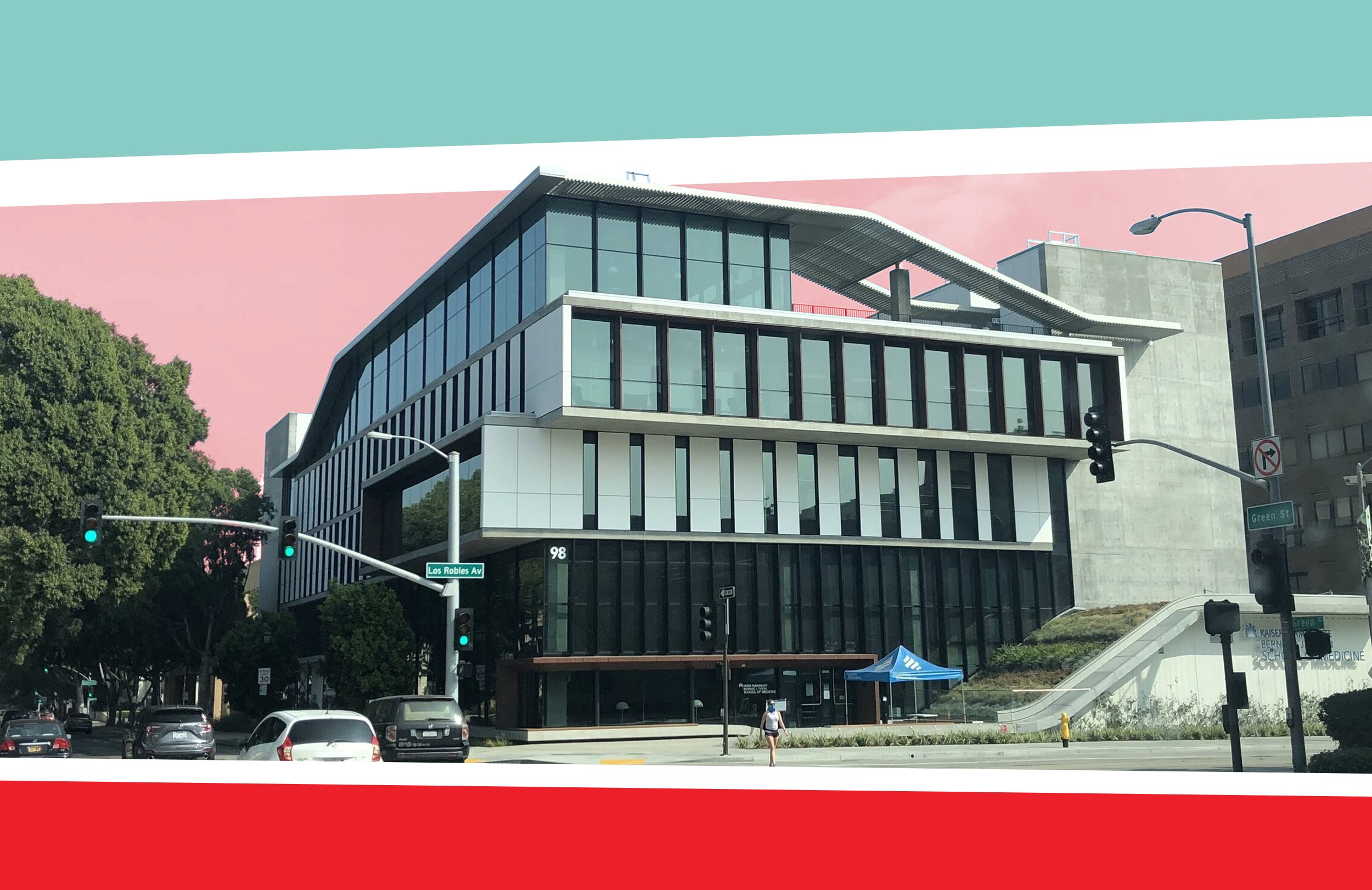
Part 1: Introduction
Part 2: Kaiser Permanente Medical School MD programs
Part 3: How hard is it to get into Kaiser Permanente Medical School?
Part 4: Kaiser Permanente Medical School secondary application essays (examples included)
Part 5: Kaiser Permanente Medical School interview
Part 1: Introduction
For an exceptional premed student applying to medical school, the array of choices can be staggering. Many familiar, old guard names are likely to come up in your search—Harvard, Yale, Johns Hopkins, and so on. Now applicants have a new institution to add to their lists: the Kaiser Permanente Bernard J. Tyson School of Medicine, where the inaugural class matriculated in July 2020.
Located in Pasadena, a few miles from Los Angeles, Kaiser Permanente Medical School has a strong focus on patient care, taking advantage of six clinical locations in Southern California. You may have heard of Kaiser Permanente, which has had residency programs since 1946, and offers health insurance and healthcare facilities, primarily in the western U.S.
Kaiser Permanente Medical School is also notable because it has promised to waive all four years of tuition for each of its first five classes. The prospect of a tuition-free MD alone makes Kaiser Permanente a more-than-appealing option for graduating premeds. It can, of course, lift the debt burden, and also free students to go into traditionally lower-paid specialties, or to pursue community health opportunities.
(Note: Although many hope that tuition-free medical schools will lead to more students pursuing primary care specialties, it is important to note that the Kaiser program does not place specific emphasis on any particular specialty. In fact, their website says, “We don’t require students to commit to any particular specialty. We encourage you to explore your interests at the school.”)
In this guide, we’ll provide the information you need to get into Kaiser Permanante Medical School, including admissions statistics, requirements, and advice and examples to help you tackle Kaiser’s secondary essays.
Part 2: Kaiser Permanente Medical School MD programs
Kaiser Permanente offers several combined degree opportunities, in addition to the MD. Additional doctoral and master’s degrees are offered in partnership with other institutions in Southern California, and students must apply and be accepted at both schools.
Here are the paths via which you can earn an MD at Kaiser Permanente Medical School:
- The traditional, four-year MD program
- Doctor of Philosophy (MD/PhD) offered in partnership with the California Institute of Technology
- MD/Master of Public Health (MD/MPH) offered in partnership with UCLA
- MD/Master of Health Administration (MD/MHA) offered in partnership with the University of Southern California
- MD/Master of Healthcare Systems Engineering (MD/MS) offered in partnership with Loyola Marymount University
Is Kaiser Permanente Medical School really free?
Kaiser Permanente Medical School has pledged to waive all four years of tuition and fees for its first five classes—through the 2024 entering class. This includes health insurance. However, according to their admissions website, students should expect estimated living expenses of $34,500 annually, though “students with demonstrated financial need may be eligible for substantial grant aid to offset living expenses.”
Students admitted after the first five cohorts can expect to pay annual tuition as well as the aforementioned living expenses and health insurance costs. Tuition is currently advertised as costing $58,052 per year, but Kaiser notes that costs are subject to a 3 percent increase each year, meaning that the cost of attendance will certainly be higher by the time paying cohorts matriculate.
However, a variety of scholarships, loans, and grants are available to admitted students, regardless of the tuition and fee waiver, and Kaiser Permanente has a Financial Aid Officer to help you determine your eligibility.
Part 3: How hard is it to get into Kaiser Permanente Medical School?
Kaiser Medical School admissions statistics
Though the Kaiser Permanente Bernard J. Tyson School of Medicine is a recent addition to the medical school landscape, the admissions statistics are striking. They accept 48–50 students per class, and the promise to waive tuition has attracted upwards of 11,000 applicants for the most recent class.
Who are the students that make the Kaiser cut? Here are some admissions statistics for Kaiser Medical School’s most recent class, the class of 2026:
- Class size: 50
- Average MCAT: 516
- Median MCAT: 516
- Average GPA: 3.76
- Median GPA: 3.74
Kaiser Permanente Medical School admissions requirements
There are no minimum requirements for GPA and MCAT scores, according to their admissions website. However, based on the admissions data above, we can see that the average GPA and MCAT scores are relatively high. Applicants can assume, based on the class size (48–50 spots), that Kaiser Permanente’s standards will be selective and rigorous, as is the case for most California medical schools.
Kaiser Permanente lists the following required coursework:
- Behavioral or social science: One semester or quarter (examples include anthropology, economics, ethnic studies, psychology, and sociology)
- General biology: One year with lab
- General or inorganic chemistry, or equivalent: One year with lab
- General physics: One year with lab
- Humanities: One semester or quarter (examples include art, English, history, literature, and philosophy)
In addition, courses in organic chemistry and biochemistry, calculus, statistics, public health (e.g. population health or epidemiology), and foreign language are recommended.
To apply to Kaiser Medical School in the 2023–2024 application cycle, you’ll need to submit an MCAT score earned between July 2021 and September 2023.
Their admissions website stresses, however, that each applicant will be considered holistically, and that admissions officers will look not only at your grades and test scores but also at your achievements in context. They’ll want to understand who you are, what you started with, and how you made the best of your opportunities. There’s no better place to showcase these qualitative aspects of your application than in your secondary essays.
Kaiser Permanente Medical School application timeline
You’ll submit your application to Kaiser Permanente Medical School via AMCAS. Here is a timeline of dates you’ll need to be aware of during the admissions process:
- May 2, 2023: AMCAS application opens
- May 30, 2023: AMCAS application can be submitted
- July 2023: Kaiser secondary application opens
- August 2022–February 2023: Interviews conducted
- October 2, 2023: AMCAS application deadline
- October 2023–March 2024: Offers of admission sent
- November 1, 2023: Kaiser secondary application deadline
- May 30, 2024: Deadline to commit to only one school
Kaiser Medical School employs rolling admissions, so you should plan to submit your primary and secondary applications as early as possible without sacrificing quality. Kaiser does not pre-screen for its secondary application, so all applicants who complete the AMCAS application will be invited to complete the secondary application as well.
Part 4: Kaiser Permanente Medical School secondary application essays (examples included)
With your AMCAS application behind you, you can devote your energy to crafting exceptional secondary essays. These essays tell the story of who you are in a way that can’t be accomplished with grades and test scores alone, and for this reason, they’re a vital part of your Kaiser Permanente Medical School application.
The 2023–2024 Kaiser secondary prompts are listed below, as well as strategies and sample essays.
Question 1: During your career as a physician, you will potentially encounter obstacles, and be required to overcome challenges. Please describe your experience with a situation that had an unfavorable outcome, including your reaction, how you might have responded differently, and what you learned about yourself. (250 words)
This is similar to the standard “adversity prompt,” which we cover in our guide to secondary essays. The difference is that, rather than ask how you overcame an obstacle, this prompt asks how you dealt with “an unfavorable outcome” and grew as a person because of it. Instead of asking for an example of success, as one would expect, it asks essentially for an example of disappointment. This is tricky, as there are obvious pitfalls to admitting an unfavorable outcome.
As with the standard adversity prompt, admissions officers want to see that you’ve handled obstacles and disappointments with grace, and that you emerged a better, wiser person after these experiences. Obviously, you don’t want to list an unfavorable outcome that makes you look really bad or negligent.
But disappointing outcomes are par for the course in the medical field, and how you deal with them will be an important part of what makes you an exceptional physician. Your focus with this prompt should be on your growth as a person—“what you learned about yourself”—rather than the unfavorable outcome itself.
Here’s an example:
For the past few years, I’ve been a volunteer for a community garden in Denver. We work with local food banks and community organizers, delivering fresh produce in the warmer months to low income residents, as well as advocate for plant-based diets.
My first year in the program, I got to know Hector. He was in his 50s and had diabetes. His left leg had been amputated, and he was wheelchair-bound. We delivered to him three times a month, discussing how a plant-based diet would lead to better health outcomes and help him manage his diabetes.
I grew close to Hector and his Boston terrier, Kermit. He was one of the funniest people I’ve ever met. We talked about the Broncos, which he loved. I hoped we could help Hector change his health situation, and while we improved his quality of life, enabling him to better manage his diabetes, in the end, he passed away.
This broke my heart. It showed me that, in many ways, our intervention was “too late” for Hector and made me determined to get involved in patients’ lives earlier, on a personal and population level, before they get diabetes. I also understand that sometimes the best you can do is help someone manage the illness they’re living with, and I want to be the best physician I can be for that, too. I would bring this understanding to Kaiser Permanente Medical School.
What makes this a good response?
- The applicant chooses an example of an “unfavorable outcome” that doesn’t actually involve failure or negligence on her part, but which does demonstrate that she understands challenges, and which inspires her to adopt exactly the kind of attitude toward health that Kaiser hopes to cultivate.
Question 2: Kaiser Permanente is committed to advancing equity, inclusion, and diversity for all. How will you contribute to the diversity of the Kaiser Permanente Bernard J. Tyson School of Medicine? (250 words)
Question 3: Lifelong learning is an essential process for continued professional development. This includes reflection and being open and responsive to constructive feedback. Please tell us about an area of intellectual exploration you’re passionate about, and your approach to exploring this area. (250 words)
Question 4: Optional: Please describe how you have been impacted by the COVID-19 pandemic. (No limit)
School of Medicine
The Kaiser Permanente Bernard J. Tyson School of Medicine opened in summer 2020 with a faculty that includes Permanente physicians and a curriculum reflecting the integrated care approach embodied by Permanente Medicine.
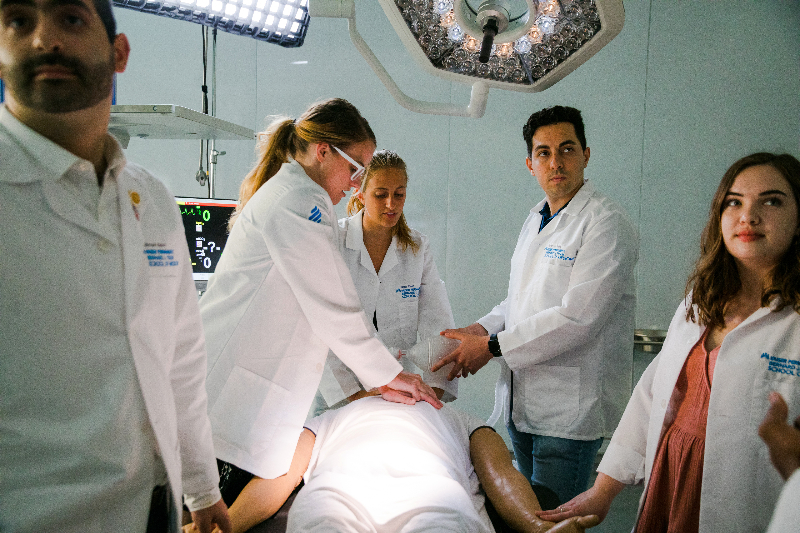
Innovative technology simulates real-world scenarios for medical students
Kaiser Permanente Bernard J. Tyson School of Medicine’s Simulation Center provides hands-on experience in a supportive environment.
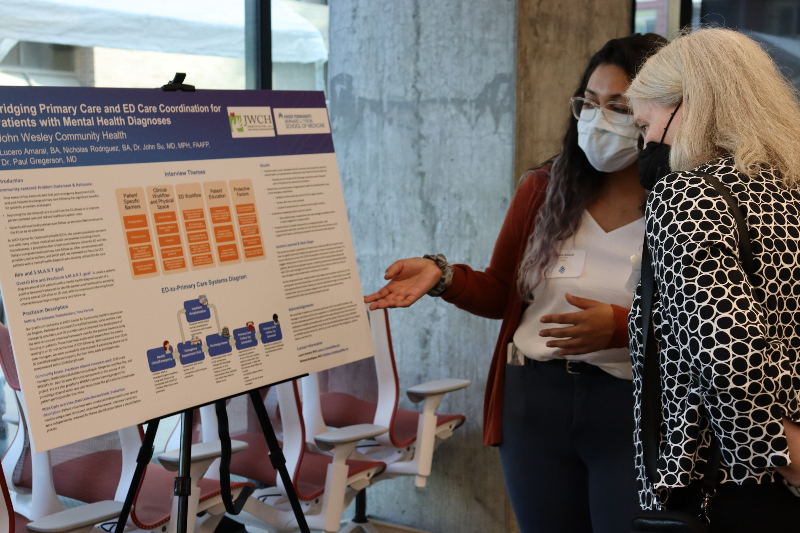
Community-based learning a focus for medical students
First class at Kaiser Permanente Bernard J. Tyson School of Medicine completes 2-year course to understand community health needs.
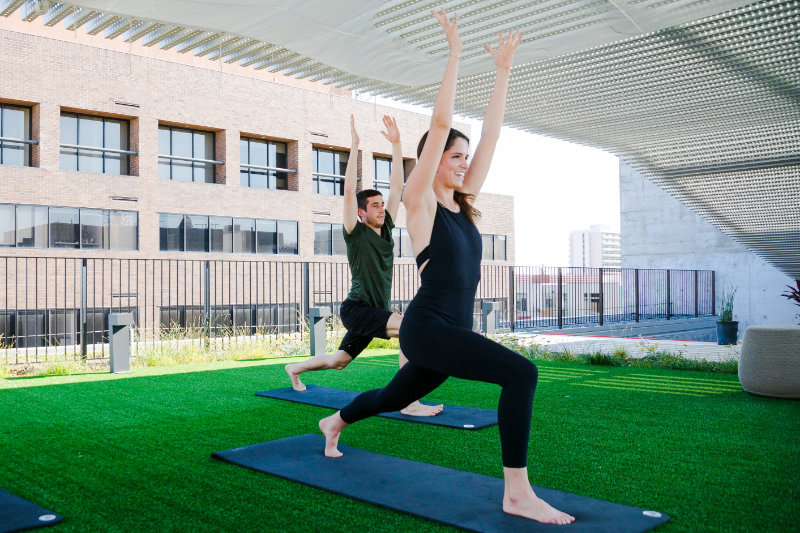
Programs focus on health and well-being for medical students
Kaiser Permanente Bernard J. Tyson School of Medicine is offering aid to students in preventing burnout and stress while prioritizing wellness.
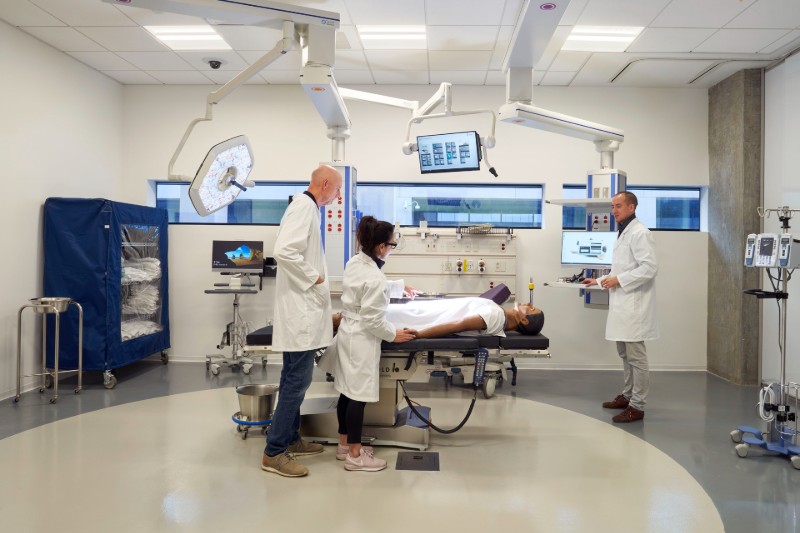
U.S. News ranks Kaiser Permanente School of Medicine among most diverse in U.S.
The medical school is the 6th most diverse in the nation and 2nd in California, according to U.S. News and World Report.
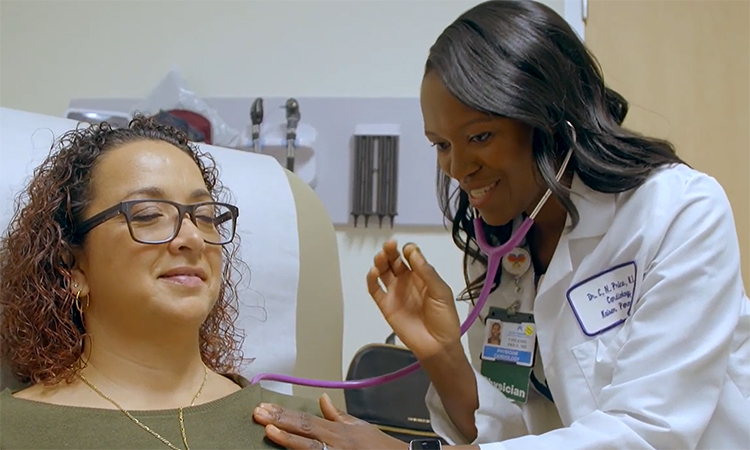
Top tips for future doctors exploring a path in cardiology
Chileshe Nkonde-Price, MD, of the Kaiser Permanente Bernard J. Tyson School of Medicine and cardiologist with Southern California Permanente Medical Group, shares insights on pursuing a career path in cardiology and offers advice to future physicians.









